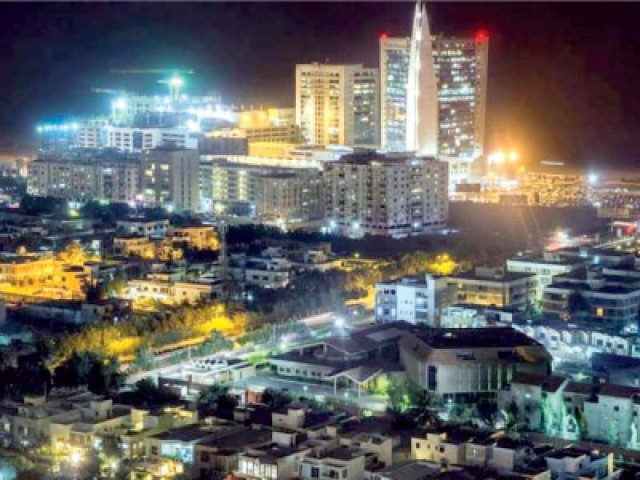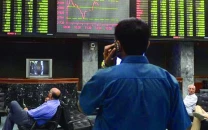Inflation to stay in double digits
APCC sets 11.5% inflation target, expects economic growth to slow down to 5%

The federal government on Saturday approved 5% economic growth and 11.5% inflation targets for the next fiscal year as it faces the challenge of striking balance between growth and economic viability.
Headed by Planning Minister Ahsan Iqbal, the Annual Plan Coordination Committee (APCC) set the current account deficit target for fiscal year 2022-23 at 2.2% of gross domestic product (GDP), or over $10 billion.
The coalition government wants to achieve the deficit target by drastically suppressing imports.
In the outgoing fiscal year, the current account deficit is estimated at $16 billion, or 4.1% of GDP. The APCC had approved the current account deficit target at 0.7% of GDP, or $2.3 billion, for the outgoing fiscal year.
Economists believe that the country could afford to have current account deficit of up to 2% of GDP.
Keeping in view the external and uncertain domestic economic environment, the GDP growth will slightly taper off and is envisaged at 5% for 2022-23 on the back of growth in agriculture sector (3.9%), manufacturing (7.1%) and services (5.1%), according to the APCC.
Investment will also be moderated because of fiscal and current account compression.
The 5% growth target is less than that achieved in the outgoing fiscal year, which according to the Planning Commission was “primarily fuelled by the excessive demand-driven consumption”.
The APCC noted that the economy was expected to consolidate the growth momentum generated two years ago. But it observed that there was a question mark over the quality of 6% economic growth in the outgoing fiscal year, which was driven by consumption.
Fiscal year 2021-22 started with positive prospects as growth-supportive policies induced aggregate demand pressures, hence, the tenuous spillover between growth acceleration and external sector vulnerabilities resurfaced, the Planning Commission told the APCC.
The APCC approved the average inflation target at 11.5% for the next fiscal year, indicating that the annual inflation rate would remain far higher than the benchmark, as the government had started increasing prices of fuel, electricity and gas for the sake of International Monetary Fund (IMF) loan deal.
A central bank representative warned in the meeting that there were significant risks to the 11.5% inflation target, suggesting that the average inflation rate may again remain higher than the target in the next fiscal year.
For the outgoing fiscal year, the previous government had approved the inflation target at 8%, but it would stay higher at 13.3%, showing failure of the State Bank of Pakistan (SBP) that is now responsible for containing inflation to the government-guided targeted level.
The Annual Economic Plan will now be tabled before the National Economic Council (NEC) next week for its formal endorsement. NEC meeting will be headed by Prime Minister Shehbaz Sharif.
The NEC is a constitutional body responsible for macroeconomic planning while the Planning Commission deputy chairman heads the APCC.
“With the likely resumption of IMF programme, the economic outlook for the next fiscal year 2022-23 is expected to result in orderly rebalancing between imperatives of economic growth and addressing external sector vulnerabilities,” said the APCC.
It added that fiscal adjustment efforts, addressing worsening trade balance, mitigating political and economic uncertainty would result in slowdown in economic growth in the next fiscal year.
The projected agriculture sector growth at 3.9% is mainly contingent upon the increase in cotton and wheat production, consistent availability of water, certified seeds, fertilisers, pesticides and agricultural credit facilities.
The industrial growth momentum will also be moderated owing to fiscal consolidation but large-scale manufacturing (LSM) is projected to sustain growth at 7.4% during 2022-23.
There are downside risks to the LSM growth from high costs and low supplies of energy inputs, exchange rate-related uncertainties and Russia-Ukraine war-related supply shocks, which have the potential to impact the manufacturing sector.
The overall manufacturing sector is projected to post growth of 7.1% in the next fiscal year.
The services sector will also slow down to 5.1%, which is lower than its five-year pre-Covid annual average growth of 5.3%.
Investment level for 2022-23 is expected to decrease to 14.7% of GDP due to stabilisation and the uncertain economic environment while the national savings rate is targeted at 12.6% of GDP.
The APCC underlined that fiscal consolidation would be pursued and efforts would be made to bring down the fiscal deficit through a combination of revenue enhancement and expenditure management policies.
Monetary policy stance would remain vigilant and supportive of demand management policies, it added.
Published in The Express Tribune, June 5th, 2022.
Like Business on Facebook, follow @TribuneBiz on Twitter to stay informed and join in the conversation.



















COMMENTS
Comments are moderated and generally will be posted if they are on-topic and not abusive.
For more information, please see our Comments FAQ